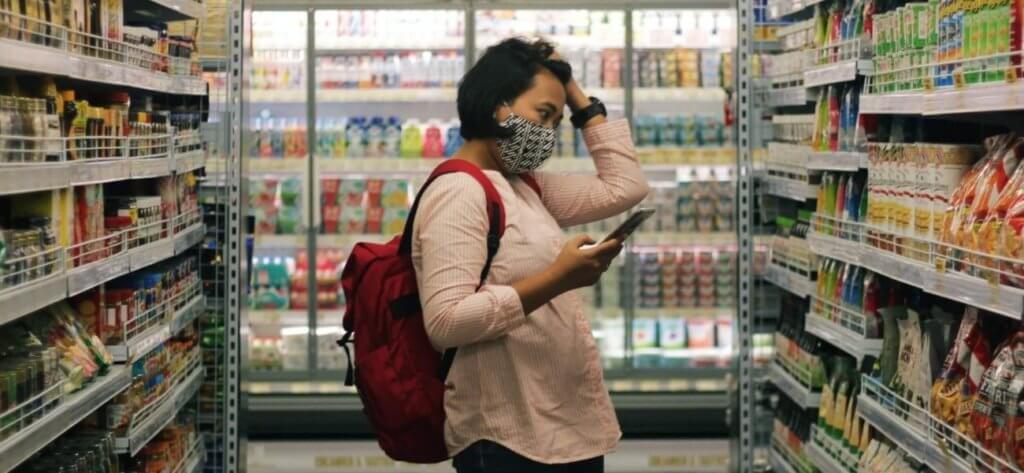Retail Media Networks (RMNs) have been experiencing significant growth over the past few years, especially in the digital realm. Digital RMNs enable retailers to create advertising opportunities for brands across their online channels, allowing marketers to reach consumers by placing ads on a retailer’s website or along various online touchpoints. As consumer mobility begins to bounce back post-pandemic, these networks are expanding to include digital out-of-home (DOOH) advertising – and it’s starting to transform shopper marketing for brands.
Why are CPG brands turning to DOOH?
With consumers now spending more time outside of their homes, extending campaign reach beyond digital advertising is key. DOOH is helping bridge the gap between digital and offline channels by allowing brands to extend their messaging along the entire path-to-purchase, a necessary move as consumers increase the amount of time they spend interacting with a brand throughout their buying journey.
Let’s take a look at some of the reasons why brands are incorporating DOOH into their shopper marketing strategies.
1. Brand awareness and impact on purchase consideration
A primary reason why DOOH is making waves in shopper marketing is its ability to build brand awareness while also helping influence buying decisions along the path to purchase. As one of the last remaining mass media channels, DOOH reaches audiences in a way that can’t be blocked, skipped, or ignored – and it does so in a brand-safe way that captures attention while establishing more trust than online channels.
For shopper marketers, DOOH is becoming more specific in terms of retailer activation. Let’s say Tide wants to run a promotion for laundry detergent at all Walmart stores across Toronto. It can strategically activate DOOH screens in close proximity to the retail stores, promoting special offers designed to drive consumers to store. In this case, DOOH is being used to influence consumer decisions.

2. The amplification of omnichannel campaigns
With DOOH, brands are amplifying their omnichannel campaigns along the consumer path to purchase, displaying eye-catching creatives across screens in premium locations and subsequently retargeting audiences via their mobile devices. This creates the ability to deliver more branded impressions while reaching consumers at every digital and offline touchpoint.
CPG brands are also extending their omnichannel reach by running DOOH ads with special offers or promotions that can be delivered via mobile devices. QR codes are proving to be highly effective in helping drive consumer engagement and in-store visits. For example, a brand can place ads on screens distributed throughout the retail location that display QR codes. Consumers can then scan these dynamic codes to immediately access special offers via their mobile devices. Each dynamic QR code can drive the consumer to a webpage or offer a coupon that’s unique to the location of a screen, leading to a brand activation that’s specific to each retail location or other variables.
Aside from increasing consumer engagement and creating a positive brand experience, cross-channel promotions are also helping brands gain measurable insight into purchase intention and campaign performance.
3. Last-touch marketing push
In-store, DOOH can act as a last-touch marketing push to influence consumer decisions at the point of purchase. Brands can run ads across screens in a retailer’s trade area, like roadside or transit, to boost brand awareness while also activating in-store screens that convey decision-making information such as product features or pricing.
CPG brands can also run DOOH ads to help push time-sensitive offers. Let’s look at malls in particular. Advertising in this retail landscape can be very promotional, and DOOH ads delivering ‘limited time only’ messaging inside the mall itself can push consumers to make their way into a store to make that purchase decision.

4. Increasing access to shopper data
With rapidly changing online privacy laws and the move towards a cookieless future, having the right data around consumer insights is more important than ever for marketers. Retailers can provide brands with first-party data, like purchasing or loyalty information sourced from their networks, that gives visibility to how and where consumers are making purchase decisions following ad exposure. With this insight, brands can get an accurate picture of how their campaigns are performing and can contextually target consumers with DOOH screens along the path to purchase. In doing so, brands can adapt campaigns and shift ad spend towards reaching prime audiences with screens in high-performing locations.
5. The rise of programmatic DOOH
Traditionally, activating brand promotions within retail networks has been static with long lead times and a lack of flexibility. Thanks to the rise in programmatic DOOH, many brands are starting to shift the way in which they buy ads, now having the ability to activate campaigns instantaneously – and the benefits are endless.
First off, brands can tailor their messaging based on contextual data triggers that range from weather (like promoting ice cream on a warm summer’s day), market data, or even inventory at a specific retail location. Programmatic DOOH enables brands to trigger campaigns on the fly, creating more operational efficiency by allowing them to quickly and autonomously launch campaigns across a retail media network without going to each publisher individually.
In the past, brands and agencies looking to purchase digital signage in specific departments or areas of a retailer were calling up media owners individually to activate screen space. With programmatic DOOH, brands can simply input their campaign parameters to trigger ad buys whenever conditions are met, simplifying the ad buying process across entire retail media networks. This also allows for more agile brand messaging, keeping it relevant to each retail location and allowing brands to customize their campaigns by running ads contextually to a product category. For example, activating an in-store ad for salsa when taco kits are on sale at a grocery store. Programmatic DOOH is also making it easier for brands to buy these in-store ad slots in conjunction with other channels like digital and mobile, delivering a full-funnel brand experience for the consumer.
It’s important to note that programmatic DOOH isn’t just benefiting brands. On the retailer side, the programmatic trading of digital screens is increasing ad loads for retailers, offering up additional revenue screens. For example, activating screens in a retailer area to promote a certain brand of bathroom tissue when there’s an overstock is beneficial to both the brand and retailer and creates a more collaborative network.
The rapidly changing shopper marketing landscape isn’t expected to slow down anytime soon, if ever, and brands have no choice but to adapt their marketing strategies to keep up or risk losing their share of voice. Gone are the days of simply relying on one channel to reach consumers, and competition between brands is at an all-time high. Adding DOOH to the marketing mix is proving to be highly beneficial for CPG brands in terms of both brand awareness and influencing consumer purchasing decisions, and by amplifying the ability to reach consumers wherever they are, brands can be sure they’re staying top-of-mind in this highly competitive landscape.
Want to learn more about adding DOOH to your shopper marketing strategy?
Book a call with our team of experts to plan your next campaign.






